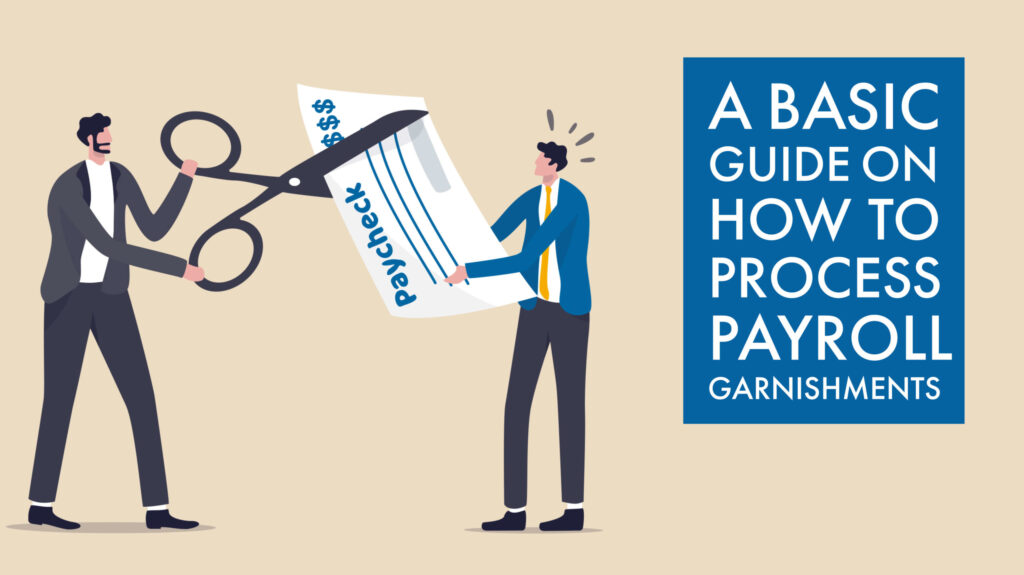Wage garnishment is a complex subject, and it can feel intimidating to an employer. But with some preparation, you can better understand garnishments and know what to do when a garnishment comes across your desk.
Wage garnishment is legal when someone owes money to a government agency or private creditor. It requires an employer to withhold part of a debtor’s earnings and send it directly to the creditor.
What is a garnishment?
A court order known as a garnishment directs your employer to withhold a set amount of your pay and transfer it to the creditor or other party to whom you owe money. Although it might be devastating for someone trying to pay off debt, you can take steps to mitigate the impact.
Usually, creditors must sue you to get a judgment before they can garnish your wages. However, some exceptions exist.
For instance, garnishment might begin without a court order if you owe federal student loans or child support.
But if you owe taxes, the IRS or the court can force your bank to freeze your account and seize any funds owed to the creditor. It is called a levy and occurs less often than a wage garnishment.
If you have a query about how to handle a wage garnishment or which creditors may be able to take your money, it is crucial to see a lawyer. They can help you determine whether a garnishment is appropriate and represent you in court.
The basic rules for garnishment are based on the federal Consumer Credit Protection Act (CCPA). Disposable earnings are an employee’s total compensation minus legally mandated deductions.
What are the basics of garnishment payroll?
Whether you are a professional payroll administrator or a small company owner, knowing the basics of wage garnishment payroll is essential. Having a solid plan and the knowledge to handle garnishments properly can save you money in the long run and even help you avoid payroll scams.
Wage garnishments are a court procedure that allows creditors to seize some of an employee’s earnings. They can do this for debts such as taxes, child support, and student loans. However, the total amount that can be deducted from an employee’s paycheck is capped.
In general, the amount that can be garnished from an employee’s wages is based on their disposable income, which includes any money remaining after legally mandated deductions such as federal, state, and local taxes; state unemployment insurance contributions; Social Security taxes; and earnings from sales commissions, bonuses, retirement plans, and pensions. Tips and service charges are not considered earnings for garnishment purposes.
Creditors can file for wage garnishments through the courts and then send your employer or bank a notice of the judgment. The garnishing of your wages usually starts about 5 to 30 days after the judge approves the judgment.
After the garnishment begins, your creditor can stop it by filing an appeal with the court or continue negotiating with you to settle the debt entirely. In addition, you can take precautions to secure your belongings. These include filing for bankruptcy, which will halt most garnishments but may leave you with certain property items on the line.
What are the benefits of garnishment payroll?
If you own a business, you almost surely have payroll issues. While you may need more time to manage your payroll in-house, there are many benefits to using an outside company for your payroll processing needs.
One significant advantage has greater confidence that your employees are being paid correctly and timely. It is especially true if you outsource payroll and compliance management.
In addition, the federal wage garnishment law caps the total earnings that can be garnished for defaulted consumer debts. These restrictions include a maximum of 15% of disposable income for federal debts and a maximum of 10% of disposable income for unpaid federal student loans.
When an employee receives a court order to garnish their wages, you must comply with the request quickly and efficiently. Most of these orders are time-sensitive, and penalties can accumulate fast if you act slowly enough.
What are the risks of garnishment payroll?
A garnishment is a court procedure where a creditor can force an employer to hold wages for debt payment. It is a complex process that includes calculating the garnishment amount, withholding it through payroll, and forwarding payments to the right agency or creditor.
Wage garnishment can occur for various reasons, including unpaid taxes, overpaid Social Security and unemployment benefits, alimony, child support, student loans, or credit card debt.
Getting a wage garnishment notice can be stressful and embarrassing for the person involved. In addition, it can cause anxiety and even anger. It can also be complicated to explain why a person is being garnished.
It’s essential to respond quickly to garnishment orders and IRS notices. Please do so to avoid costly penalties and fines for your business.
Garnishments can be especially risky if you have employees in multiple states. In addition, compliance requirements vary by state, so you must monitor legislation and changes in garnishment laws actively.
When an employee receives a garnishment order, the employee should notify you within seven days. The employee should also report their wages to you following the garnishment order, which is required under federal and state law.




